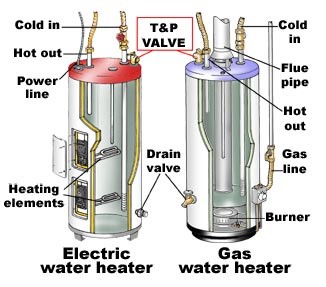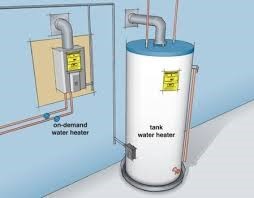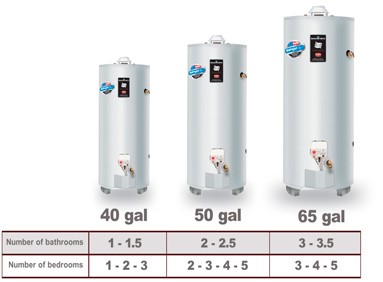16 Things you should Never Drop Down your Garbage Disposal
You whipped up dinner and threw the scraps into your kitchen sink without giving it a second thought, for the garbage disposal to do its job. We’ve all done this numerous times.
Such little lapses could eventually cause big-time damage. It’s true, that garbage disposals were invented with the aim of creating a fast and easy way to dispose of trash and clean up your kitchen.
However, disposals have limits on what they can dispose of and what they can’t. In regards to your garbage disposal, adopting good disposal habits and prevention are best practices.
With the United States producing 624,700 metric tons of waste daily, garbage disposals have become a necessity in most homes to manage waste but when damaged they can be very expensive to fix.

So how do you know what not to drop into your garbage disposal in order to prevent damage?
That’s what you’ll learn in this article, knowing this will save you tons of cash in repairs. So let’s look at 16 things you should never throw into your garbage disposal.
1. Coffee Grounds

Most likely you’ve heard about how coffee grounds help to clean your garbage disposal and eliminate odors; however, putting coffee grounds in your garbage disposal is a big no-no and should be avoided.
If you want to clean your garbage disposal you can try using lemon and ice.
Even though it’s quite tempting to toss the coffee grounds into your drain, as it seems like a quick solution, it will cause a very costly backup.
2. Egg Shells

After whipping up your bacon and eggs breakfast, you can easily form the habit of throwing the eggshells into the garbage disposal.
The eggshells may seem brittle and harmless, but after you throw them down the drain, your garbage disposal grinds it up into tiny pieces and it ends up sticking to other oily and fatty substances which creates a huge clog.
Asides from this, the inner membrane of the eggshells gets stuck in the garbage disposal blades which makes it dull in grinding up waste.
3. Fat and Oils
Fats and oil account for over 47% of all sewer overflow in the United States yearly, this shows that it’s a major problem for your garbage disposal and must be actively prevented.
As a matter of fact, these two substances spell woe for your garbage disposal.
They act as adhesives for all other substances thrown into your drain and create sticky, thick globs in your pipe which stops every other thing from passing through.
4. Pasta and Rice

Dropping cooked rice and pasta into your garbage disposal can cause a plumbing nightmare. This is because they are foods that expand in water, and will increase in size when in the disposal.
Also, the garbage disposal grinds the pasta and rice making a nasty thick paste which will cause your garbage disposal to stop functioning or block your drain.
5. Bones and Other Solids

You shouldn’t send solid substances down your garbage disposal, it may be strong but it’s certainly not strong enough to break bones and other types of solid wastes.
They will get stuck in your pipes and sink and, jam your disposal as well as cause numerous other issues. Rather, put them in the bin or compost them.
Also, seed pits should never be put in the garbage disposal, because of how thick they are.
6. Celery

While some veggies can slide down your garbage disposal with no issues at all, celery can cause it to back up with heavy problems.
This happens as a result of the long fibers it possesses which tie up the glides of your garbage disposal
7. Paper Towels
Even though paper towels are biodegradable, they won’t dissolve instantly because they are made to be absorbent, so they’ll end up restricting the blades of your disposal.
8. Cotton Balls
As soft as cotton balls are, if you dump a bunch of them in your garbage disposal, you’ll end up restricting the blades from moving.
9. Oatmeal

Oatmeal especially when uncooked can easily slip through the disposal without being cut. Oatmeal generally swells or expands when it makes its way through the disposal.
In some occasions, the oatmeal may flow out of the garbage into the sewer but if it doesn’t flow out and it gathers in the down line and you will have to clean out the drain and this can be very discomforting.
So if you do not want to constantly do some plumbing work on your garbage disposal, try not to let oatmeal get into it.
10. Nuts

No matter how tempting it looks don’t ever succumb to the temptation of dumping nuts into your drainage. Nuts are hard to get rid of and peanuts are not exempted.
It may look as if they glide easily into the garbage disposal but the issue is not getting them into the garbage disposal it is getting them out of the garbage disposal.
If peanuts and peanut butter get into your garbage disposal, the drain will get clogged and the process of unclogging is quite messy and tiring.
11. Onion Skins

If big chunks or diced onions are dumped into the garbage disposal, it doesn’t really cause any problem, but where the problem lies is if the thin membrane which comes after the dry outer layer gets stuck in the garbage disposal.
This inner layer is not just thin; it is also very slippery and can easily pass into the garbage disposal without your notice.
The thinness makes it easy for it to miss being cut by the blades of the garbage disposal and they it gets wound around the drain.
Once it gets wound in the drain it begins to catch more items that should pass through the drain and before you know it the drain will become blocked.
You can, however, avoid this annoying scenario by dropping the thin layer in the trash and then cut it up into tiny pieces before throwing the tiny pieces into the garbage disposal.
12. Trash
Trash like plastic bags, paper towels, candy wrappers, banana peels, shouldn’t be put into the garbage disposal.
What you could do is put materials like this into the recycle bin or look for alternative ways of disposing of them.
13. Fruit Pits

Some fruits have very hard and dense pits in their center and despite the fact that other parts of the fruit can be put into the garbage disposal, the pits shouldn’t be put into it to avoid running into problems.
Have you ever tried to cut through the pit of a peach fruit?
The answer is most likely no. If you are not able to cut it open with a knife then the garbage disposal will most likely not be able to grind it up either.
When hard items are dropped into the garbage disposal, the machine will begin to malfunction and will have difficulty properly disposing of waste.
Save yourself the stress by dumping your fruit pits into somewhere else order than the garbage disposal.
14. Cleaning Chemicals
Avoid pouring harsh cleaning chemicals such as industrial grade cleaners and drain busters into the garbage disposal.
Regular cleaning agents like dish soap are not capable of causing any harm but harsh chemicals can cause damage to both your garbage disposal and your drain line.
You may think that putting these chemicals will help to clean the blade of the garbage disposal but all they will end up doing is causing wear to it.
If you want to clean the blades of the garbage disposal you can use ice cube of dish soap to clean out any buildup of dirt or grease and if it is clogged, you can seek for alternative ways of unclogging it without using harsh chemicals.
15. Paint
When you pour paint (oil or latex) into your garbage disposal, the paint won’t go directly into the drain, it will cling to the sides of the disposal and also the pipes and then begin to get hard and clog the drainage.
You can pour heavily diluted paint into the disposal without running into any problem but once the paint is concentrated, don’t pour it into the disposal directly.
16. Wet wipes

Wet wipes are an absolute no for your garbage disposal. They create knots which prevent the disposal from functioning optimally and ultimately damage it.
Conclusion
While having garbage disposal makes getting rid of unwanted waste quicker, if you do not know the do’s and don’ts of using one, you may end up spending a fortune in fixing it.
However, following the above list, you can save a lot of cash by avoiding unnecessary repairs.
This post first appeared on https://blog.antaplumbing.com
 The two most common tank water heaters run on gas or electricity.
The two most common tank water heaters run on gas or electricity. Also known as the “on demand” water heater, it only turns on when you need hot water. There is no holding tank, which makes this a more efficient option. However, like the electric water heater, this also makes it a more expensive option.
Also known as the “on demand” water heater, it only turns on when you need hot water. There is no holding tank, which makes this a more efficient option. However, like the electric water heater, this also makes it a more expensive option.

